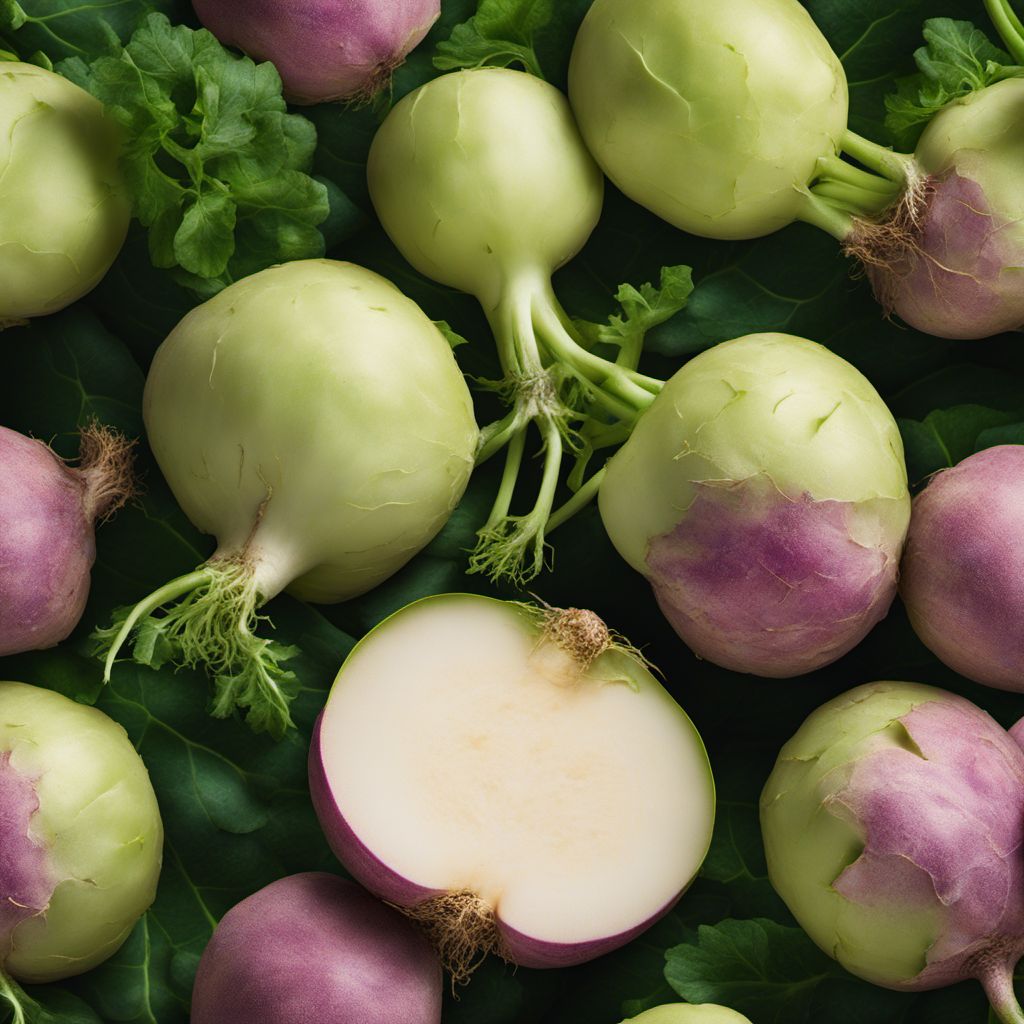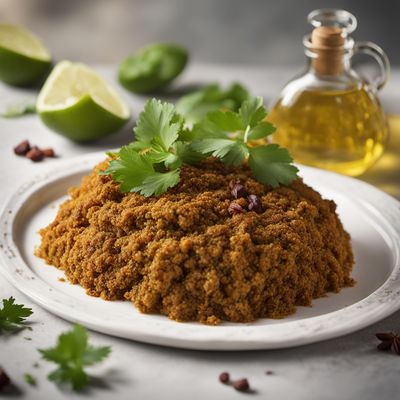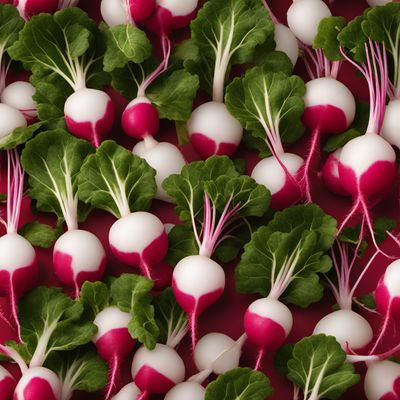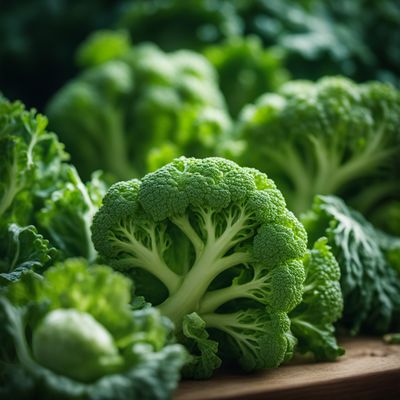
Ingredient
Rutabaga greens
The Nutrient-Rich Greens: Rutabaga Greens
Rutabaga greens are dark green leafy vegetables that are packed with essential vitamins, minerals, and antioxidants. They have a slightly bitter taste and a tender texture, making them a versatile ingredient in salads, stir-fries, or sautés. Rutabaga greens are known for their high nutritional value and are often used as a substitute for other leafy greens.
Origins and history
Rutabaga greens are believed to have originated in Scandinavia and were introduced to North America by European settlers. They have been cultivated for centuries and are commonly used in Nordic and British cuisines. Rutabaga greens are also popular in Southern cooking, where they are often cooked with bacon or ham for added flavor.
Nutritional information
Rutabaga greens are low in calories and rich in vitamins A, C, and K. They also provide important minerals such as calcium, potassium, and iron. Additionally, they contain antioxidants that help protect against oxidative stress and inflammation.
Allergens
Rutabaga greens may cause allergic reactions in individuals with a known sensitivity to cruciferous vegetables, such as cabbage or broccoli.
How to select
When selecting rutabaga greens, look for ones that have vibrant green leaves without any signs of wilting or yellowing. The leaves should be crisp and free from blemishes or insect damage. Avoid rutabaga greens that have a strong, unpleasant odor, as this may indicate spoilage.
Storage recommendations
To store rutabaga greens, remove any rubber bands or ties and place them in a plastic bag or container lined with a damp paper towel. Store them in the refrigerator and use them within a few days for the best flavor and texture.
How to produce
Rutabaga greens can be grown by planting rutabaga seeds in well-drained soil with adequate sunlight. They require regular watering and can be harvested when the leaves are young and tender. The greens can be harvested multiple times throughout the growing season.
Preparation tips
Rutabaga greens can be used in salads, stir-fries, soups, or sautés. They can be blanched and added to pasta dishes or used as a filling for wraps or sandwiches. Rutabaga greens can also be used as a substitute for other leafy greens, such as kale or collard greens, in various recipes.
Substitutions
If rutabaga greens are not available, you can use other leafy greens as substitutes. Kale, collard greens, or Swiss chard can be used in place of rutabaga greens in most recipes. Spinach or arugula can also be used as alternatives in salads or sautés.
Culinary uses
Rutabaga greens are commonly used in Nordic, British, and Southern cuisines. They are often cooked with bacon or ham in Southern dishes and used in traditional Scandinavian recipes like rutabaga soup or rutabaga gratin.
Availability
Rutabaga greens are commonly available in regions where rutabagas are cultivated, such as Scandinavia, the United Kingdom, the United States, and Canada.
More ingredients from this category
Recipes using Rutabaga greens » Browse all

Kålrotstappe with a Middle Eastern Twist
Middle Eastern Spiced Mashed Rutabaga

New York-Style Pizza
Elevated New York Delight: Haute Cuisine Pizza

Panino con la porchetta
Italian Porchetta Sandwich: A Flavorful Delight

Eurasian-style Pickled Mustard Greens
Tangy and Spicy Eurasian Pickled Greens

Bresaola and Porcini Salad
Savory Delights: Bresaola and Porcini Salad

Galician-style Pork Shoulder with Turnip Greens
Savory Galician Delight: Slow-cooked Pork Shoulder with Greens

Panino Friulano with Prosciutto, Asiago, and Arugula
Italian Delight: Prosciutto and Asiago Panino with a Peppery Twist

New Nordic Bangers and Mash
Nordic-Inspired Sausages and Mashed Potatoes

Estonian-style Vegetable Salad with Peanut Dressing
Nutty Delight: Estonian Peanut Vegetable Salad

Icelandic Lamb Soup
Hearty Lamb and Vegetable Soup: A Taste of Iceland

Brazilian-style Creamy Risotto with Arugula
Arugula Delight: Creamy Brazilian Risotto with a Twist

Luxembourgian Mushroom Salad
Savory Delights: Luxembourgian Mushroom Salad

